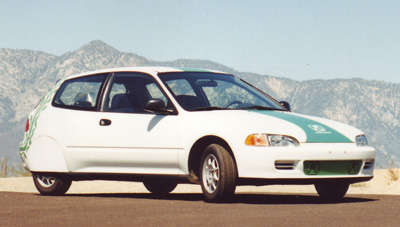 Electric and hybrid cars could act as energy stores for the power grid when not being driven. New Scientist reports that researchers from the University of Delaware are using a new prototype by AC Propulsion to store or supply grid electricity (Washington DC got a first dose in October). If hundreds or thousands of owners opt into the system, the efficiency of power distribution could improve. A lot. The average US car is driven one out of every 24 hours. Combustion-powered cars are useless off the road. But plug-ins could act as backups to the grid while idle.
Electric and hybrid cars could act as energy stores for the power grid when not being driven. New Scientist reports that researchers from the University of Delaware are using a new prototype by AC Propulsion to store or supply grid electricity (Washington DC got a first dose in October). If hundreds or thousands of owners opt into the system, the efficiency of power distribution could improve. A lot. The average US car is driven one out of every 24 hours. Combustion-powered cars are useless off the road. But plug-ins could act as backups to the grid while idle.
“Storage is golden for power companies because it is hard to do,” [Willet] Kempton told New Scientist, who notes that the cost of storing excess electricity means that there is only capacity for around 1% of yield in the US and UK. Storage is particularly important for renewable energy because power supplied by the Sun, the oceans, or the wind, is often irregular.
Each plug-in can provide $4,000 of storage to an energy company per year, at a cost of $600 to install the high-power connection system. Energy companies need to pass on some of their savings to encourage drivers to help out, says Kempton… Hmm. Technology might be the easy part.











